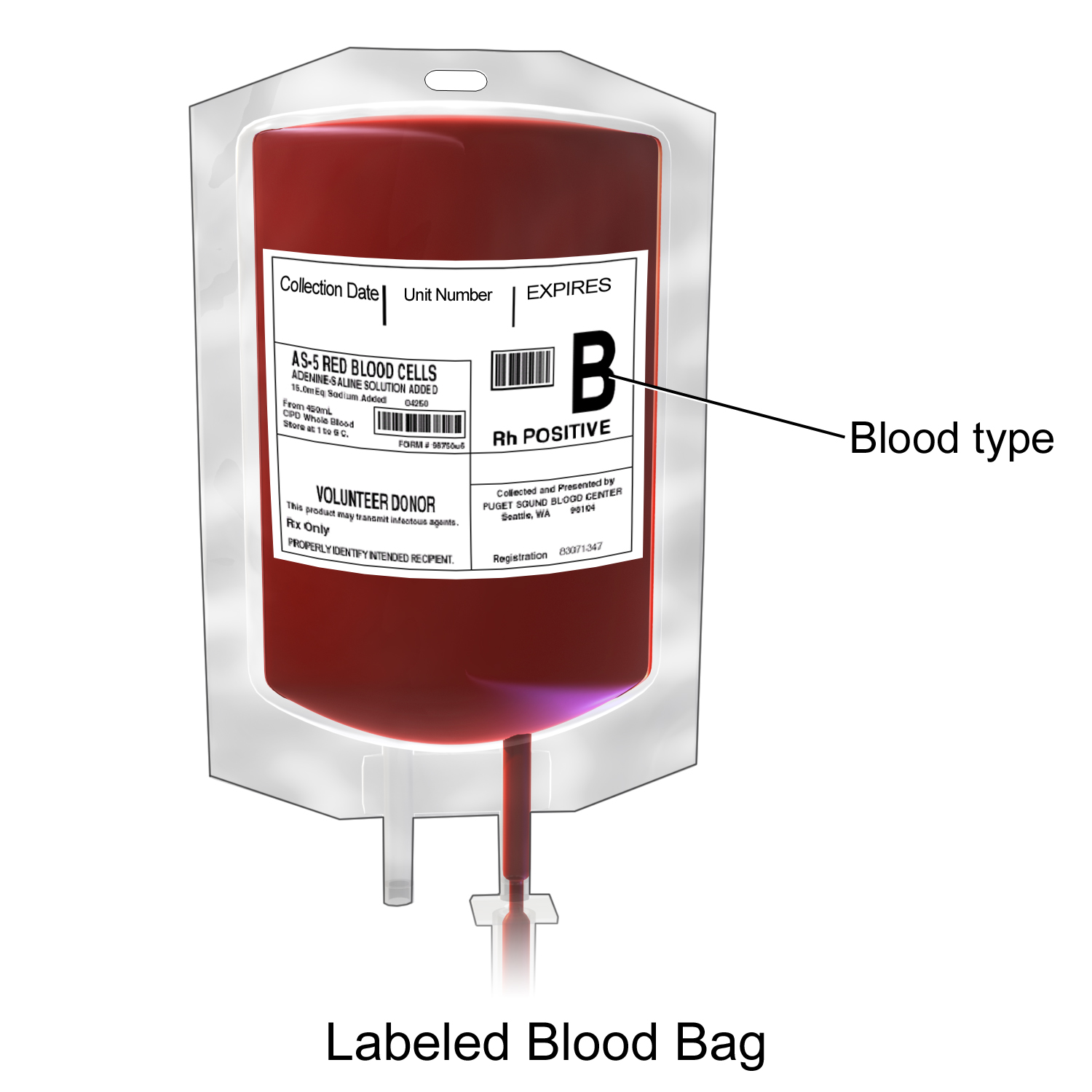
Packed red blood cells
Packed red blood cells, also known as packed cells, are red blood cells that have been separated for blood transfusion.[1] The packed cells are typically used in anemia that is either causing symptoms or when the hemoglobin is less than usually 70–80 g/L (7–8 g/dL).[1][2][3] In adults, one unit brings up hemoglobin levels by about 10 g/L (1 g/dL).[4][5] Repeated transfusions may be required in people receiving cancer chemotherapy or who have hemoglobin disorders.[1] Cross-matching is typically required before the blood is given.[1] It is given by injection into a vein.[6]
Side effects include allergic reactions such as anaphylaxis, red blood cell breakdown, infection, volume overload, and lung injury.[1] With current preparation methods, the risk of viral infections such as hepatitis C and HIV/AIDS are less than one in a million.[1] Packed red blood cells are produced from whole blood or by apheresis.[7] They typically last for three to six weeks.[7]
The widespread use of packed red blood cells began in the 1960s.[8] It is on the World Health Organization's List of Essential Medicines.[9][10] A number of other versions also exist including whole blood, leukocyte reduced red blood cells, and washed red blood cells.[1]
Side effects[edit]
Side effects can include allergic reactions including anaphylaxis, red blood cell breakdown, fluid overload, infection, and lung injury.[1] Giving incompatible RBCs to a person can be fatal.[27]
With current testing methods in high-income countries the risk of infection is very low.[11][28][29] However, in low-income countries the risk of a blood donation being positive for HIV, hepatitis C, or syphilis is approximately 1%, and the risk of it being hepatitis B positive is approximately 4%.[11] Although the World Health Organization recommends that all donated blood is screened for these infections, at least 13 low-income countries are unable to screen all their donated blood for at least one of these infections.[11]
Society and culture[edit]
Names[edit]
The product is typically abbreviated RBC, pRBC, PRBC, and sometimes StRBC or even LRBC (the latter being to indicate those that have been leukoreduced, which is now true for the vast majority of RBC units). The name "Red Blood Cells" with initial capitals indicates a standardized blood product in the United States.[40] Without capitalization, it is simply generic without specifying whether or not the cells comprise a blood product, patient blood, etc. (with other generic terms for it being "erythrocyte" and "red cell").